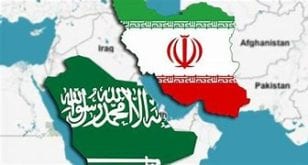iranintl – Data from the Statistical Center of Iran shows that the country’s GDP growth has been slowing, while remaining growth is fueled by higher government spending and more oil production.
According to the Statistical Center’s data, released on February 24, Iran’s GDP growth stood at 5.1 percent in autumn (4Q2023).
This is the second consecutive quarter that the country’s GDP growth slows, while some sectors like agriculture as well as energy (electricity, gas, and water) have even shrunk.

However, oil sector experienced a 21.8 percent growth, thanks to increasing shipments to China. OPEC’s data show Iran’s oil production has increased from below 2.7 mb/d in autumn 2022 to 3.16 mb/d in the same period in 2023, but the growth has stopped since November. Therefore, oil production is not expected to remain a major driving force for economic growth in 2024.
Iran was producing 3.8 mb/d and exporting 2.5 mb/d of oil before the United States pulled out of the JCPOA nuclear deal and imposed sanctions in 2018.

The Statistical Center data shows that GDP growth was 7.9 percent in spring 2023, declined to 7.1 in summer and stood at 5.1 percent in the last quarter.
It is important to note that international organizations have estimated somewhat lower numbers for Iran’s GDP growth. According to the International Monetary Fund, Iran had 3 percent GDP growth in 2023 fiscal year, expected to decrease to 2.5 percent in 2024 and plunge to 2 percent in 2025.

The most important issue in the data is the lion share of the unbridled general government spending in GDP growth.
The general government final consumption expenditure value, based on 2011 fix prices, increased by 16.7 percent during autumn 2023, compared to the same season in 2022.
Meanwhile, the private sector expenditure increased only 3.1 percent, while the gross fixed capital formation (GFCF) grew by 3.4 percent in the mentioned period.
Therefore, the current 5.1 percent GDP growth has been driven mostly by government consumption expenditure growth rather than improvement in private sector or GFCF.
To put it in simple terms, current GDP growth is not based on industrial or employment expansion and does little to alleviate economic pressure on a population that has increasingly lost its purchasing power since 2018. With a persistent 40-percent and higher annual inflation rate for the past five years, millions of people have sunk into near poverty.
The main reason for higher government spending has been the steady devaluation of Iran’s currency, rial, and the ensuing higher inflation. The higher spending is not a sign of more investments or welfare appropriations, but a sign of the government printing more money and inflating its spending numbers.
The reliance of GDP growth on the oil sector and higher government inflation-related spending is clearly seen in the deterioration of people’s living conditions. Even regime officials have been sounding the alarm about growing poverty and many loyalist conservatives have been blaming the government of President Ebrahim Raisi, although continuing US sanctions is related to Iran’s foreign policy decided by Supreme Leader Ali Khamenei.
 Shabtabnews In this dark night, I have lost my way – Arise from a corner, oh you the star of guidance.
Shabtabnews In this dark night, I have lost my way – Arise from a corner, oh you the star of guidance.



